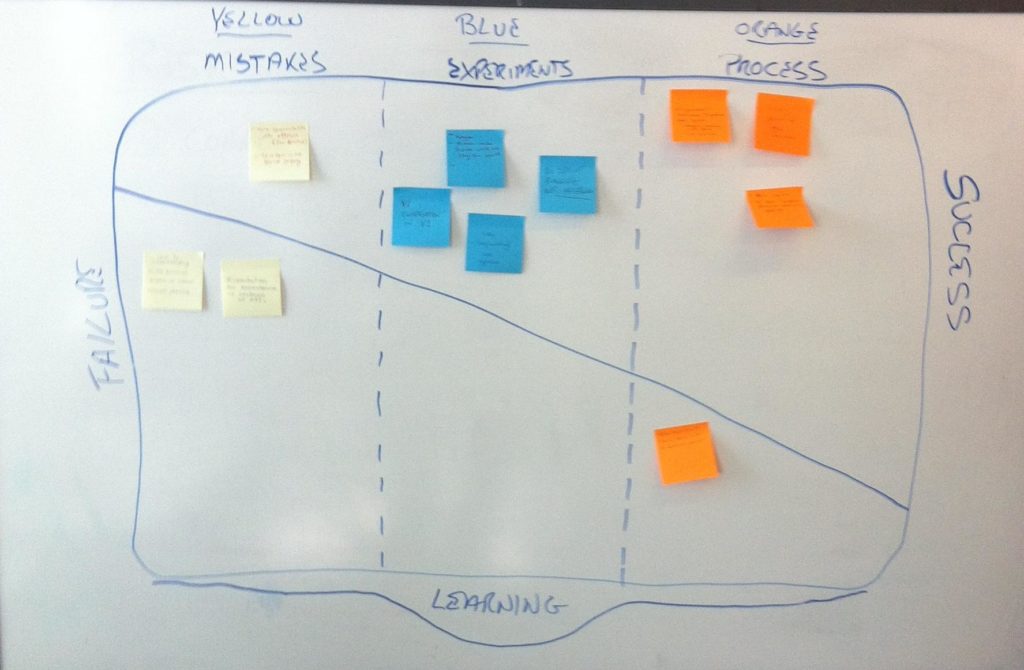by Vasco Duarte
*Ping* Ah, email. And a good one at that: my friend Robie Wood with a great story. Robie works at showVALUE, a company that specializes in agile management, training and other stuff like that. With 31 years of solid experience, he’s an old hand in the business. Anyway, he recently read Jurgen Appelo’s “yay!” questions workout, that’s all about successes and failures, mistakes and practices. I
n a nutshell: if you want to get better, you should emphasize good practices by asking the two “yay!” questions: 1. What did we do well? (by following practices). 2. What did we learn? (by running experiments).
First experiment: so far, so good
Robie liked the article, so he decided to run some experiments. And, very “yay!” like, he kept us in the learning loop. He started out with a Scrum Team; he used the diagram that Jurgen drew in his book (Robie and his people now call it the Retro-Board) ‘as a way to structure the retrospective to get us in a mode of thinking about what we are actually learning’.
The good news: the team agreed that it looked promising. After a sticky note galore, in the end Robie and the team thought they had made ‘a refreshing attempt at improving their approach to retrospective’. So far, so good.
I think the Management Workouts provide very practical and effective guidance for changing Agile Management concepts into real life practices.
Robie Wood
Collecting experiments

Robie re-read the article a couple of times, thought back about what went well and where there was room for improvement.
After that he ran another test. Extra interesting: this time the team even involved remote workers. They talked about mistakes, about practices that went well and what practices went not so well. In addition, the team members had to come back with ‘at least one experiment that they could take on during the next sprint’.
It turned out to be a success, ‘every person on the team thought it was the best retrospective that they had attended’. And for Robie it was ‘the best’ he ever facilitated.
Robie still works with the method, fine-tuning it as he goes along. He and his people are now more and more used to it, and he told me they are ‘very much developing a learning mindset’.
That is, of course, the best news for me. And for Robie and his team certainly a reason to celebrate.
Photo: rawpixel (Unsplash)

